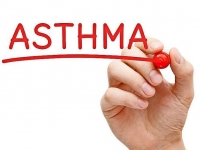elements in the body
Prevention of infectious diseases: how to protect yourself and your family
 Many of the diseases that cause viruses, fungi or bacteria that have entered our bodies can be simply avoided. For example, intestinal infections most often affect people due to non-compliance with basic hygiene rules. It is more complicated with airborne microorganisms: nobody is insured against flu or ORVI. But, knowing and observing uncomplicated disease prevention measures, one can minimize the risk of infection.
Many of the diseases that cause viruses, fungi or bacteria that have entered our bodies can be simply avoided. For example, intestinal infections most often affect people due to non-compliance with basic hygiene rules. It is more complicated with airborne microorganisms: nobody is insured against flu or ORVI. But, knowing and observing uncomplicated disease prevention measures, one can minimize the risk of infection.
What diseases belong to infectious
Diseases that cause infectious bacteria to enter the body are dealt with by infectiology. An infectious disease itself is the body’s response to an alien microorganism or virus entering it. Continue reading
What is botulism?
 Botulism is an acute toxic and infectious disease in which severe damage to the human nervous system occurs. The causative agent of botulism is in the intestine of animals, birds, fish, and from there it gets back to the soil and water. Bacteria of botulism, called anaerobes, live exclusively in places where there is no air, and therefore badly washed, uncleaned, hermetically packaged food is extremely dangerous.
Botulism is an acute toxic and infectious disease in which severe damage to the human nervous system occurs. The causative agent of botulism is in the intestine of animals, birds, fish, and from there it gets back to the soil and water. Bacteria of botulism, called anaerobes, live exclusively in places where there is no air, and therefore badly washed, uncleaned, hermetically packaged food is extremely dangerous.
The main danger of botulism is that the toxin blocks the respiratory function of a person, the lack of oxygen provokes the disruption of the work of all internal organs. Botulinum toxin is the most potent biological poison in the world, it is hundreds of thousands times more dangerous than poison, for example, rattlesnake. However, it quickly loses its harmful properties during heating and boiling. Continue reading
What is a cholera?
 Today in Yemen, the epidemic of cholera rages, the world health system headed by the WHO pays a lot of attention to this problem. This fact raises the question of what cholera is, why it is real in the XXI century and whether it is dangerous for the people of Ukraine?
Today in Yemen, the epidemic of cholera rages, the world health system headed by the WHO pays a lot of attention to this problem. This fact raises the question of what cholera is, why it is real in the XXI century and whether it is dangerous for the people of Ukraine?
Cholera: What is this illness, what are its symptoms and consequences?
Cholera is an acute, especially dangerous, infectious disease. In a short period of time, it can infect a significant number of people, causing the whole epidemic, with mortality from it reaching 50% in the absence of adequate treatment. According to WHO statistics, every year in the world 1.3 to 4 million cases of infection with cholera are recorded, with dying from 21 to 143 thousand people. Continue reading



